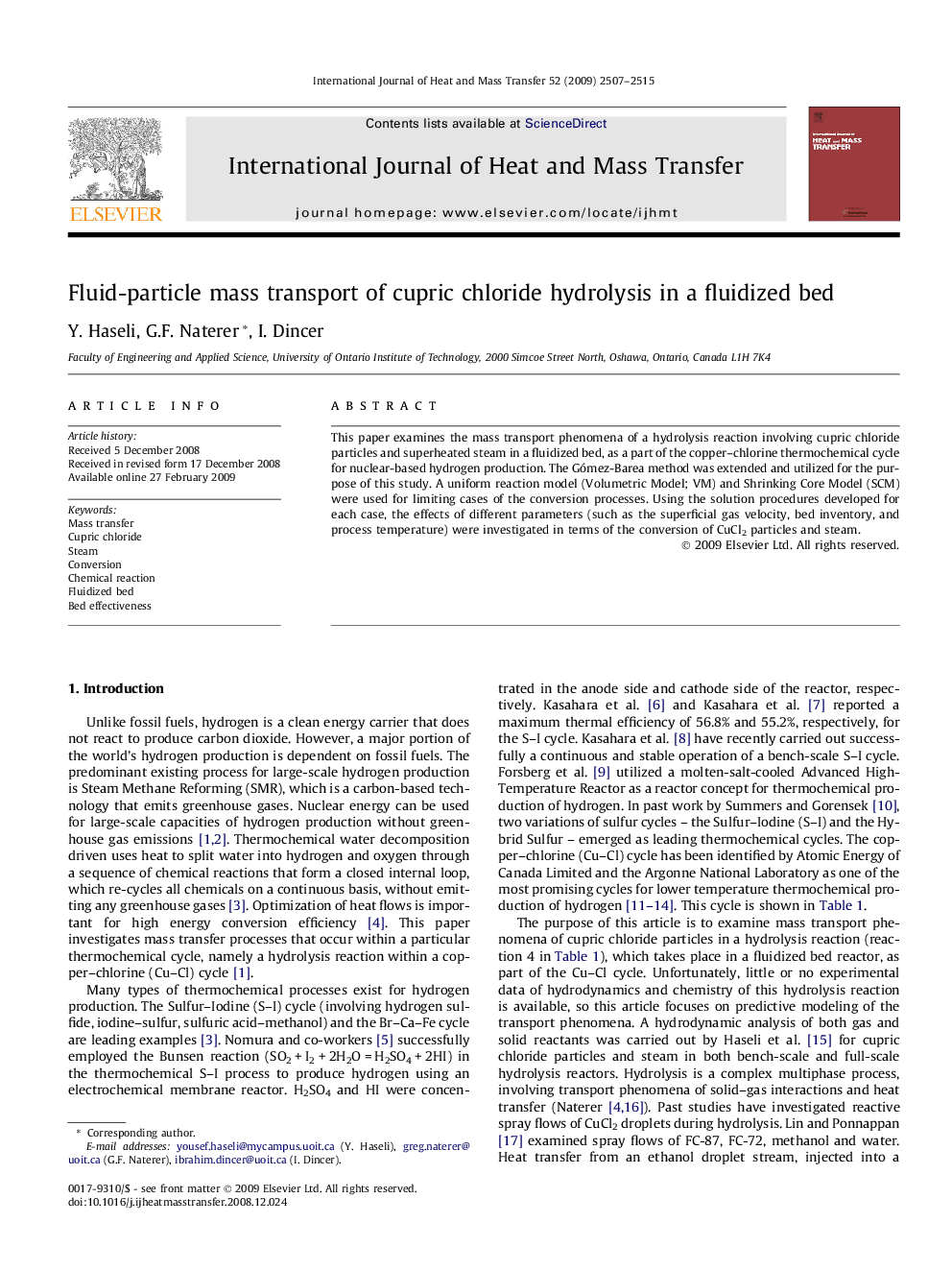| Article ID | Journal | Published Year | Pages | File Type |
|---|---|---|---|---|
| 662179 | International Journal of Heat and Mass Transfer | 2009 | 9 Pages |
Abstract
This paper examines the mass transport phenomena of a hydrolysis reaction involving cupric chloride particles and superheated steam in a fluidized bed, as a part of the copper–chlorine thermochemical cycle for nuclear-based hydrogen production. The Gómez-Barea method was extended and utilized for the purpose of this study. A uniform reaction model (Volumetric Model; VM) and Shrinking Core Model (SCM) were used for limiting cases of the conversion processes. Using the solution procedures developed for each case, the effects of different parameters (such as the superficial gas velocity, bed inventory, and process temperature) were investigated in terms of the conversion of CuCl2 particles and steam.
Related Topics
Physical Sciences and Engineering
Chemical Engineering
Fluid Flow and Transfer Processes
Authors
Y. Haseli, G.F. Naterer, I. Dincer,
